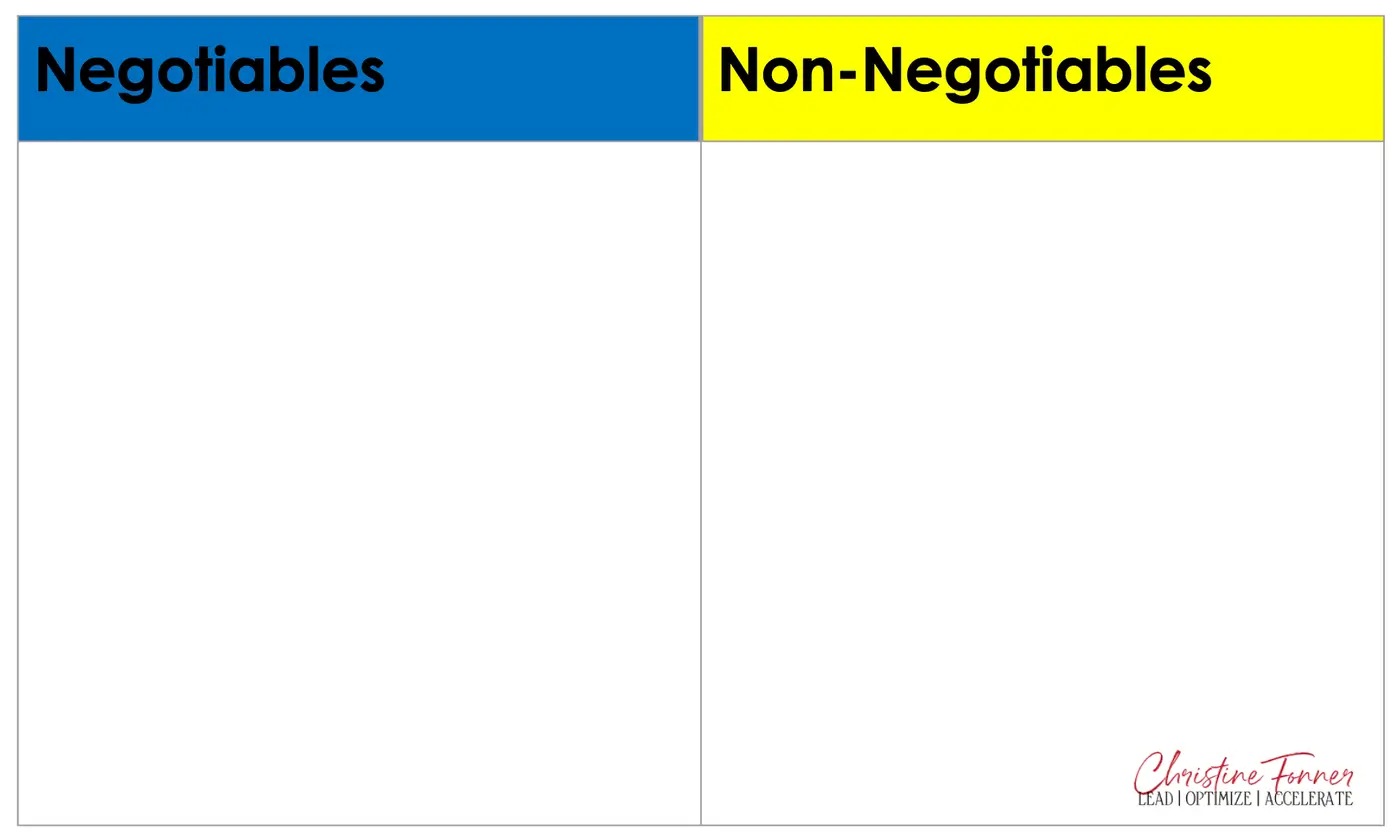
Negotiables vs. Non-Negotiables: The Secret to Better Workplace Agreements
March 29, 2025
Ever feel like your hands are tied at work? Like decisions are made from above, and all you can do is nod along? That’s the frustration of confusing non-negotiables with negotiables. But here’s the good news: while some things are set in stone, there’s actually a lot more flexibility than we often realize.
Understanding Non-Negotiables
Non-negotiables are the foundations of an organization. These include mandates, directives, policies, and the company’s mission, vision, and strategic plan. By accepting a job, you’ve essentially agreed to operate within these boundaries. If these core elements clash with your personal values, no amount of negotiation will change them—this might be a sign that the organization just isn’t the right fit for you.

For example, if an organization’s mission doesn’t align with your ethical beliefs, or if a top-down directive feels like a dealbreaker for your professional integrity, no meeting or conversation is going to reconcile that tension. It’s better to recognize these misalignments early rather than struggle against immovable forces.
The Power of Negotiables
Here’s where things get interesting: within those non-negotiables, there’s a lot of room to shape the way work actually gets done. Think of it like playing a board game—while you can’t change the basic rules, you can decide how to strategize, collaborate, and adapt within them.
Negotiables include how change initiatives are implemented, what processes can be improved for efficiency, how teams communicate, and the ways people build and grow within the company. These are areas where employees often have more influence than they realize, yet too often, they surrender their power by assuming everything is rigidly fixed.
Expectations vs. Agreements
This is where expectations and agreements come into play. Expectations are often assumed but unspoken, leading to frustration when unmet. Agreements, on the other hand, are openly discussed, mutually understood, and built on negotiation. If you assume everything is a non-negotiable, you might not even attempt to turn expectations into agreements—losing valuable opportunities for collaboration and clarity.
Creating Your List: What’s Fixed and What’s Flexible?
Want to gain more control over your work? Try making a Negotiables vs. Non-Negotiables list.

Non-Negotiables: Company mission, legal policies, compliance regulations, industry standards, and leadership directives.
Negotiables: Workflows, internal communication strategies, team dynamics, professional development, and implementation of new processes.
By clearly identifying where you do and don’t have power, you can stop wasting energy fighting the immovable and start focusing on where you can make a real impact. So, where do expectations and agreements fall in your daily work? And how can you shift more conversations toward creating agreements rather than assuming limitations?
The workplace has more flexibility than you think—you just have to know where to look for it.

Christine Fonner
Christine Fonner, PhD Candidate, is a renowned speaker and leadership expert, specializing in organizational and transformational leadership, communication and team development, and strategic change management.
She has over 20 years of leadership experience spanning the nonprofit, corporate, and educational sectors. Her passion for leadership development, especially in challenging environments, shines through in every presentation. With a Bachelor’s in Elementary Education and Bilingual/ESL K-12, as well as a Master’s in Transformational Leadership and Change Management, Christine combines deep academic insight with real-world experience.